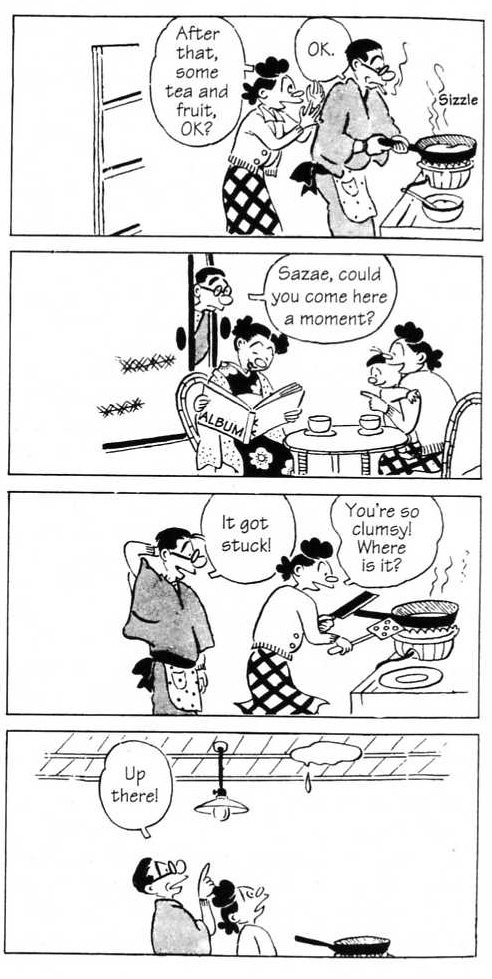
Today’s license request is a little unusual for a couple of reasons. First, a chunk of it has already been made available in English, but it’s out of print. Second, it’s a newspaper strip, which I don’t think I’ve asked for before. It’s Machiko Hasegawa’s Sazae-San, a long-running, much-loved, four-panel comic about an endearing woman and her extended family.
According to Paul Gravett’s Manga: Sixty Years of Japanese Comics, Chic Young’s Blondie made quite an impression on Japanese readers when it debuted in 1946, “instilling in its readers the desire to share in the middle-class American dream.” Blondie got bumped in 1951 for home-grown Sazae-San. Gravett’s description offers a compelling explanation for that:
“For decades Hasegawa’s affectionate, unglamorized portrayal of an everywoman’s good humor and quiet strength (based on the mangaka’s own life) conveyed the sot of feminine insights that would have probably escaped most male cartoonists altogether.”
According to Wikipedia, it ran from 1946 to 1974, mixing contemporary issues, particularly feminism, with the lighthearted domestic comedy.

In the late 1990s, Kodansha International published a dozen volumes of the strip in its bilingual comic line under the title The Wonderful World of Sazae-San. Though out of print, several of the volumes are available on Amazon.Com, and, better still, lots of the entries include sample pages, including the first, second, third, and fourth, among others.
The strips look charming, and I guess it wouldn’t be that expensive to track down the Kodansha volumes, but in this era of handsome collections of classic strips, I’d love to see a new printing of the material. To my way of thinking, the obvious choice would be Drawn & Quarterly with its demonstrated fondness for classic comics from Japan and wonderful comic strips by women.
Gravett calls Hasegawa “Japan’s first successful woman comic artist,” which seems like reason enough to have her work in print. Her work’s charm and universal themes of family life, combined with a three-decade glimpse into daily life in Japan, make the prospect of new English-language publication seem both entertaining and important.

